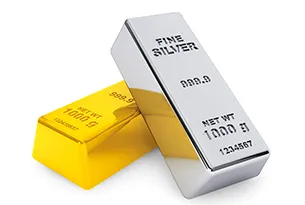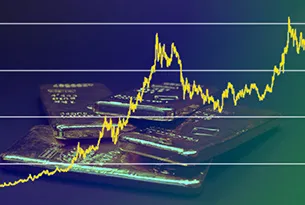I always pay strict attention to price formations when evaluating any market. Swing highs and lows are two of the most important formations to learn to identify. Many traders use these areas as entry areas on pullbacks when trading with the trend. Because their orders will be there as a ‘buffer’ to slow the counter-trend rise or fall of price, I often hide my orders above swing highs and below swing lows. But many traders, especially those just learning to read charts, have trouble understanding just what it takes to make a particular high a ‘swing high’ or a particular low a ‘swing low’.
Let’s start out by looking at two types of line charts that show swing highs and lows. By line charts, I mean the actual bars of data are not shown; instead only the extremes of price swings are connected, to give a chartist a clearer picture of the past and current price swings.


The first chart shows a specific method of charting swing highs and lows that was developed by W. D. Gann in the first half of the 1900’s. The second chart shows a more common method of charting swing highs and lows and it is this second method that I’ll be describing in this article. Note that in general, when marking swing highs and lows, I do not specify that X bars have to pass before a new swing high or low can occur. Instead, I let price formations confirm each new price extreme—and that’s the key to understanding what makes the top of a particular bar a ‘swing high’.

Looking at this chart, I have already marked in a Swing High “A” and a Swing Low “B”. And note that price has now climbed above the price extreme I labeled Swing High “A”. Does that make this new high in price a swing high? No, because I don’t yet know whether the new high is in place or if price will continue to work its way higher. In the back of my mind, I should be thinking that price is ‘working’ on a new swing high. But it is not a swing high until a price formation confirms it as an extreme high. It’s not as confusing as it sounds. Let me try to show a better example of extremes that are not yet confirmed by price formation extremes:

Looking at this chart, I see a series of lower lows and lower highs that came after price made an extreme high. But note that price has not yet traded below the prior low [at the far left of this chart]. Nothing yet says to me: “The extreme low is in for this swing!” That means a true swing low has not been put in yet. Let’s look at another example:

At first glance, it looks as if price left an extreme high and then traded lower and most traders would be tempted to say a swing high had just occurred. But is it a swing high? In this case, price made a new high and then came down and is now re-testing the prior low—In fact, at the moment the last bar is part of “double bottoms”, which is an important price formation but cannot be used to confirm a swing high or low. Only a low lower than Swing Low ‘A’ can ‘confirm’ the high that price made two bars earlier as a true swing high.

Price breaks below the double bottoms and the low of Swing Low ‘A’ and that confirms the high three bars earlier as Swing High ‘B’.

It takes new lows to confirm Swing Highs and new highs to confirm Swing Lows. Trading these back and forth motions in the market is swing trading.
Once you learn to identify swing highs and swing lows, you can begin to anticipate what it will take to make the next price extreme a swing high or low and how to use that in your trading.

Swing High ‘B’ is confirmed when price breaks below the prior low that formed Swing Low ‘A’ and note that price is now making a series of lower lows and lower highs. Has price made a swing low yet? Remember, only a new swing high above a price extreme can confirm a swing low. There is nothing yet to even hint that price has made an extreme low.

After the sharp fall, price consolidates, forming an Energy Coil [an area of tight congestion]. Energy Coils is generally a sign that price is re-storing energy, taking a break after an extreme move. Note that they are often followed by a series of false break outs, so it can be dangerous to blindly buy or sell break outs from these areas. Did price just make a new swing low? Let’s take a closer look:

I view the Energy Coil and the engulfing bar before it as a price formation. Now that price has climbed back above both the Energy Coil and the engulfing bar before it, the double bottoms below the Energy Coil are confirmed as Swing Low ‘B’. This is a classic bottoming formation, by the way, and unless price quickly ‘zooms’ through this area to the down side, this area should provide very good support. Note that we cannot identify a new swing high yet.

Once price breaks below the double bottoms that formed Swing Low ‘B’, Swing High ‘C’ is confirmed. It is this back and forth actions that swing traders learn to anticipate and trade. The better you are able to anticipate the formation and confirmation of these swings, the better your swing trading will be.

Even though price briefly penetrated the bottoming formation of the Energy Coil, this area holds a great deal of support and price soon trades higher, above Swing High ‘C’ and that confirms Swing Low ‘C’.
Understanding the nature of swing highs and swing lows is not difficult once you take a few apart and see just how they are built and what it takes to confirm each new swing.
I wish you all good trading!
Tim Morge



































